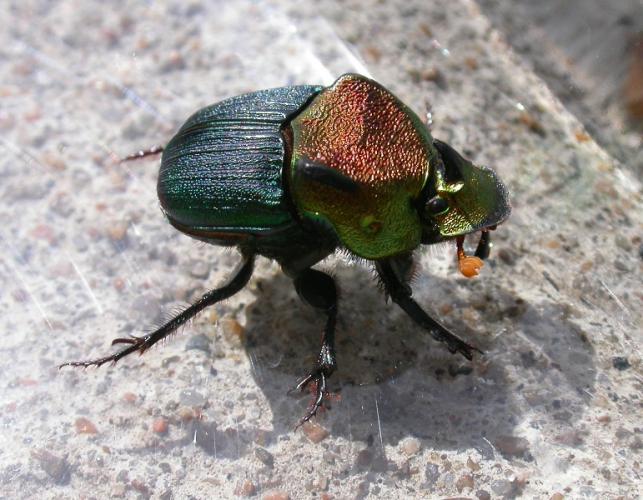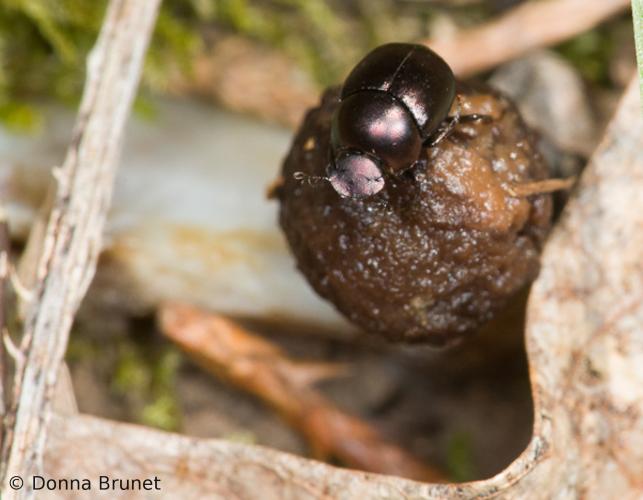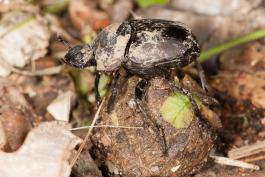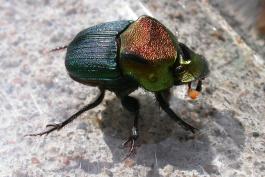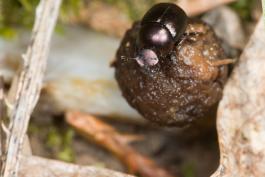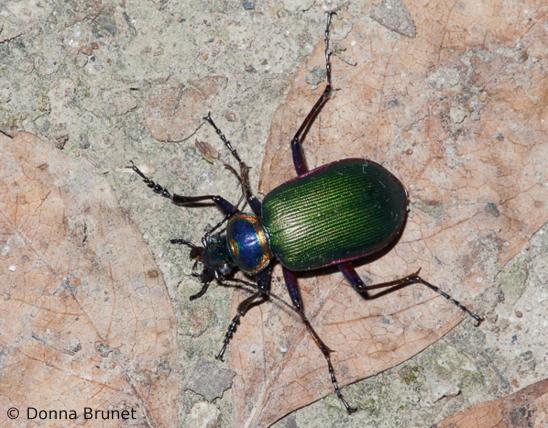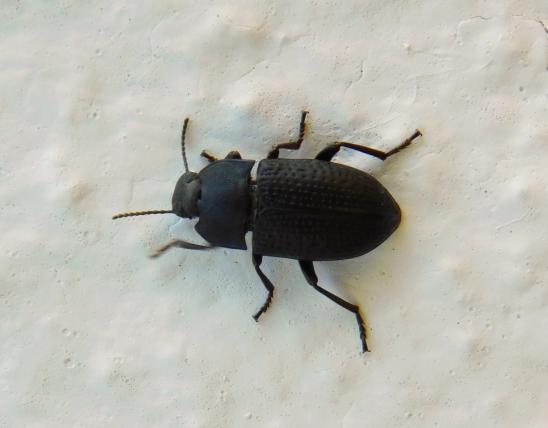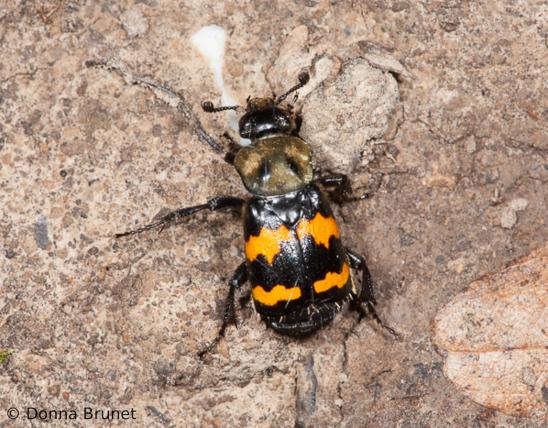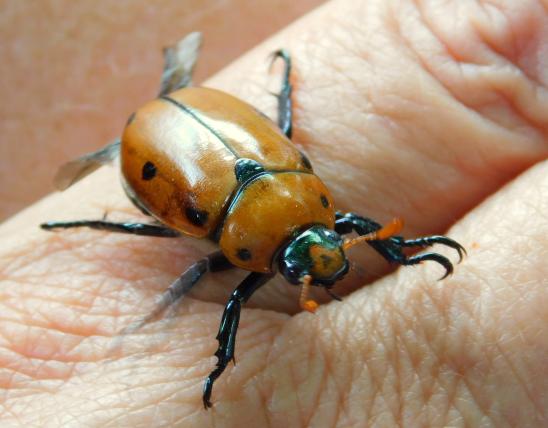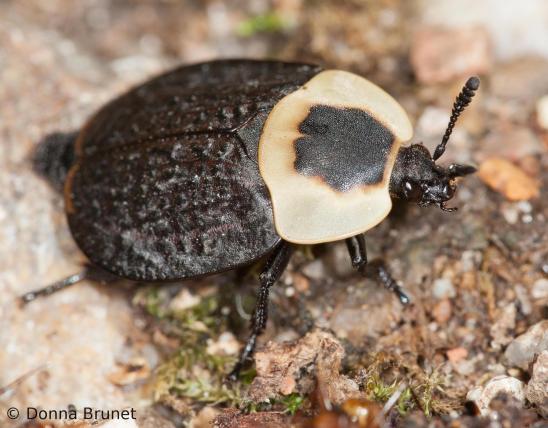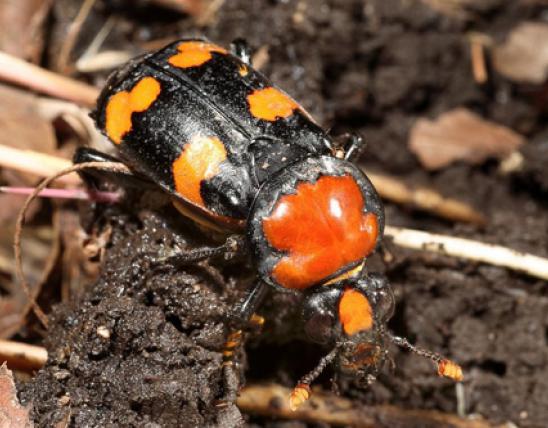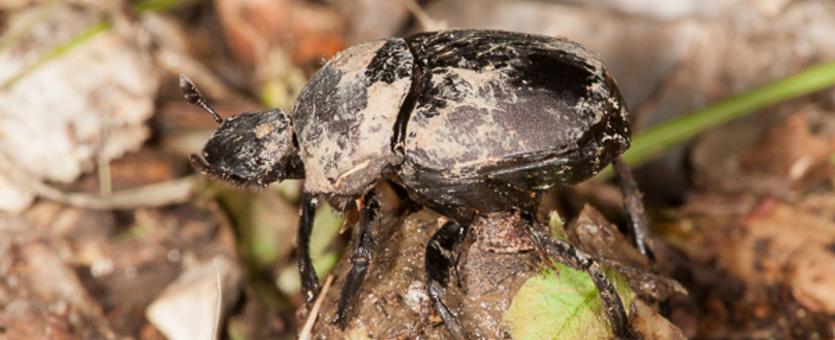
Dung beetles are a large and diverse group; most species feed primarily on feces. As with other scarab beetles, they are oval, stout, and have clubbed antennae with feathery segments that can press tightly together or can be fanned open. Most people identify dung beetles by their behavior, when they see them collecting or rolling dung. Anatomically, most dung beetles have the last pair of legs attached closer to the tip of the abdomen than to the base of the middle pair of legs. The head and the pronotum (a plate behind the head) are often broad, and in many species, those of males are adorned with horns or other projections. Most dung beetles are dull black, sometimes shiny black, some species with lengthwise ridges. Some, such as the rainbow scarabs (Phanaeus spp.), have bright metallic greens and coppers.
The larvae are whitish, C-shaped grubs that develop in or beneath a dung heap, or within a ball of dung their parents have crafted for their protection and nourishment.
Length: to about ¾ inch (varies with species).
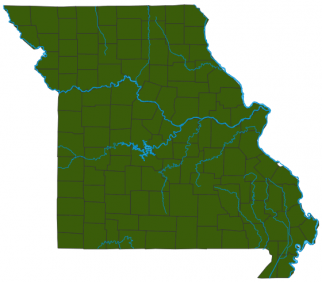
Statewide.
Habitat and Conservation
Dung beetles are usually seen on, near, and beneath feces. They are sometimes seen rolling dung balls away from the original heap, heads down and pushing the ball backward with their hind legs. The adults often fly to lights at night. Although initially revolting, the feeding habits of dung beetles are intensely fascinating. Plant material is difficult to mammals to digest, and dung beetles capitalize on nutrients that pass undigested through a mammal’s digestive tract.
Food
Although some species eat carrion or fungi, most feed at least partly on dung, particularly the dung of mammals, especially herbivores. The first objective of many adult dung beetles is not to feed themselves but to secure food for their larvae. That is why they bury and sometimes roll away dung: They will lay eggs inside the balls, and the growing larvae will have a private supply. They will not have to compete with other animals (such as fly maggots) for food.
Life Cycle
Most famous are the ball-rollers. Adults smell, then fly to fresh dung. They slice pieces off the “cake” and tamp them into a ball, perfecting the shape with their flattened legs. Mated pairs, and sometimes also rival males, then roll the ball away from the original source. They dig a hole, bury the ball, mate, and the female lays eggs inside the ball. The larvae hatch, feed on the dung, grow, pupate, and then become adults.
Human Connections
By cleaning pastures of manure, dung beetles reduce pests and flies while hastening the return of nutrients to the soil — which improves pastures. Their work saves the U.S. cattle industry hundreds of millions of dollars annually.
Ancient Egyptians revered the dung beetle as a symbol of rebirth.
The famous French entomologist and natural history writer J. Henri Fabre (1823–1915) wrote entertaining, memorable descriptions of the life cycle of dung beetles.
Ecosystem Connections
Whether they roll manure, tunnel into it, or burrow beneath it, dung beetles speed up nature’s recycling process.
By digging holes and burying pieces of manure, they help aerate and fertilize soils.
They are eaten by a variety of insectivores, including skunks, bats, and birds.

